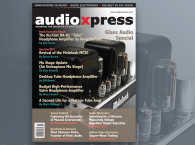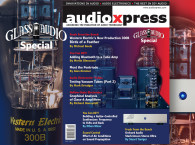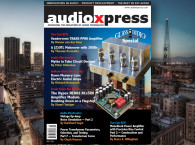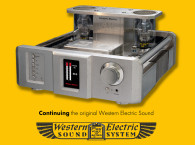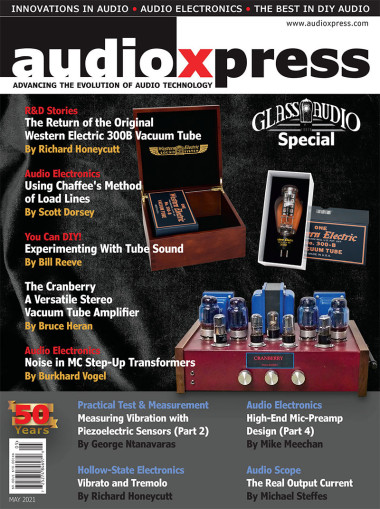 audioXpress May 2021 is now available in print and digital, and we are extremely proud to once again celebrate our roots in Glass Audio, and all things tube audio. As many of our readers know, audioXpress magazine was created as a monthly title combining the mostly quarterly periodicals Speaker Builder, Audio Electronics and Glass Audio, creating the definitive monthly reference publication for all builders, DIY enthusiasts, and audio designers and developers.
audioXpress May 2021 is now available in print and digital, and we are extremely proud to once again celebrate our roots in Glass Audio, and all things tube audio. As many of our readers know, audioXpress magazine was created as a monthly title combining the mostly quarterly periodicals Speaker Builder, Audio Electronics and Glass Audio, creating the definitive monthly reference publication for all builders, DIY enthusiasts, and audio designers and developers.
The original Glass Audio periodical was launched in 1989 and was published twice a year, and that is precisely what audioXpress celebrates every year with this special edition each May. And this year, we are obviously very glad to once again feature a tube entirely manufactured in the United States on our cover, celebrating the reintroduction of the famous Western Electric 300B triode, now out of Rossville, GA.
In this edition, Richard Honeycutt asked key questions to entrepreneur Charles Whitener, the main force behind the revived Western Electric venture, which is also investing in new tube audio amplifiers and tube related electronics. Since a visit to the facilities wasn't yet possible but production has resumed, audioXpress provides an inside look at Western Electric and its reestablished operations.
And this celebration is complemented with another excellent article, which we are certain less experienced tube enthusiasts will revisit frequently. In "Using Chaffee’s Method of Load Lines," Scott Dorsey offers a useful explanation on those curved lines that are found on tube datasheets, plotting the plate voltage against the plate current with a whole array of different grid voltages, and how to draw load lines to easily predict tube circuit operations.
And for the intermediate audio builders, curious to explore the benefits of tubes on the sound, Bill Reeve proposes a unique and extremely valuable preamplifier design that enables you to compare the difference between tubes and solid-state circuits. In "Experimenting with Tube Sound," Reeve explains how automatic gain control applied to solid-state and vacuum tube audio paths enable interesting design, construction, and listening experiences. More experienced designers will be particularly interested in exploring how the difference amplifier provides an AGC circuit with an error voltage representing the average (rather than instantaneous) volume difference between the two output signals.
Next up, Bruce Heran offers another great tube amplifier project that he recently perfected to expand his vast DIY collection. The Cranberry is indeed a versatile stereo tube amplifier that uses a simplified concept that originated in the 1940s and was initially intended for a budget amplifier. From that starting point, of slaving one of the output tubes to the other, Heran perfected the concept with a constant current source design in the cathodes, a balance control between the cathodes, and modern component choices.
And as always, audioXpress celebrates Audio Electronics, and in this edition we are proud to offer a thorough essay by Burkhard Vogel on signal-to-noise (SN) measurements of moving coil (MC) phono amps. Inspired by Gary Galo’s December 2020 audioXpress article about the usage of Jensen Transformer’s MC SUT JT-44K-DX, in this article this expert on tube audio and electronic noise topics, demonstrates how an MC step-up transformer (SUT) produces noise because of its insignificant impedance, and why it is good practice to measure a transformer with an input load.
This edition of audioXpress also expands on the fascinating voyage undertaken by George Ntanavaras, on Measuring Vibration with Piezoelectric Sensors. In Part 2 of this article series, Ntanavaras discusses the design and construction of such a system, configurations of the charge amplifiers circuits that he built and tested, and the connections to the piezoelectric sensors. He also presents some additional sensors that could be used for vibration measurements.
And in the fourth article of a series discussing The Science and Physics of High-End Mic-Preamp Design, Mike Meechan describes the different approaches that have determined the design and features of microphone preamplifiers according to its uses in studio and live music capture. After describing the fundamentals in microphone preamplifier design and how to retain the fidelity of the mic signal along its path from transducer to output, Meechan expands on what contributes to perfect active mic preamps.
And, Michael Steffes shares his vast knowledge of audio electronics and integrated circuits for audio design in his Audio Scope column. This month, he explores various approaches to specify output current and the evolution of this critical parameter in op-amps and fully differential amplifier specifications. An essential factor that should be well characterized when designing audio amplifiers.
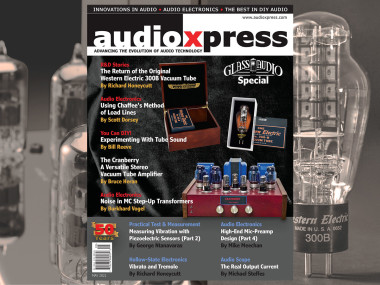 This May 2021 edition concludes with another excellent Hollow-State Electronics article, deviating slightly from the electronics focus of the monthly column. This month, Richard Honeycutt discusses the differences between vibrato and tremolo and how those effects have been applied in circuits that creatively expand the sound produced by guitar amps and Hammond organs.
This May 2021 edition concludes with another excellent Hollow-State Electronics article, deviating slightly from the electronics focus of the monthly column. This month, Richard Honeycutt discusses the differences between vibrato and tremolo and how those effects have been applied in circuits that creatively expand the sound produced by guitar amps and Hammond organs.
A new audioXpress issue with great content, as published 12 times per year, and available in print and online. Subscribing to the digital online version allows immediate access at: www.audioxpress.com/page/audioXpress-Subscription-Services.html
If you wish to buy a single printed issue or the complete audioXpress archive on USB, from 2000 to 2021 (yes, including the latest issue), just visit our online shop at www.cc-webshop.com
Don't miss out, get your copy of audioXpress right now at www.gotomyxpress.com

- on Magazine News
- News
audioXpress May 2021 Celebrates Its Glass Audio and Audio Electronics Roots
April 12 2021, 02:10
Our May 2021 Glass Audio Special edition is certain to inform and inspire you. We reveal what is happening at Western Electric's new Rossville Works in Georgia, where production of 300B tubes is ongoing, we explain how to draw tube load lines, and we offer a valuable preamplifier design that enables you to compare the sound of tube and solid-state circuits from the same audio source. There's also a versatile stereo tube amplifier design to build, and plenty more audio electronics theory and practice in this edition. Now available online and in print.


